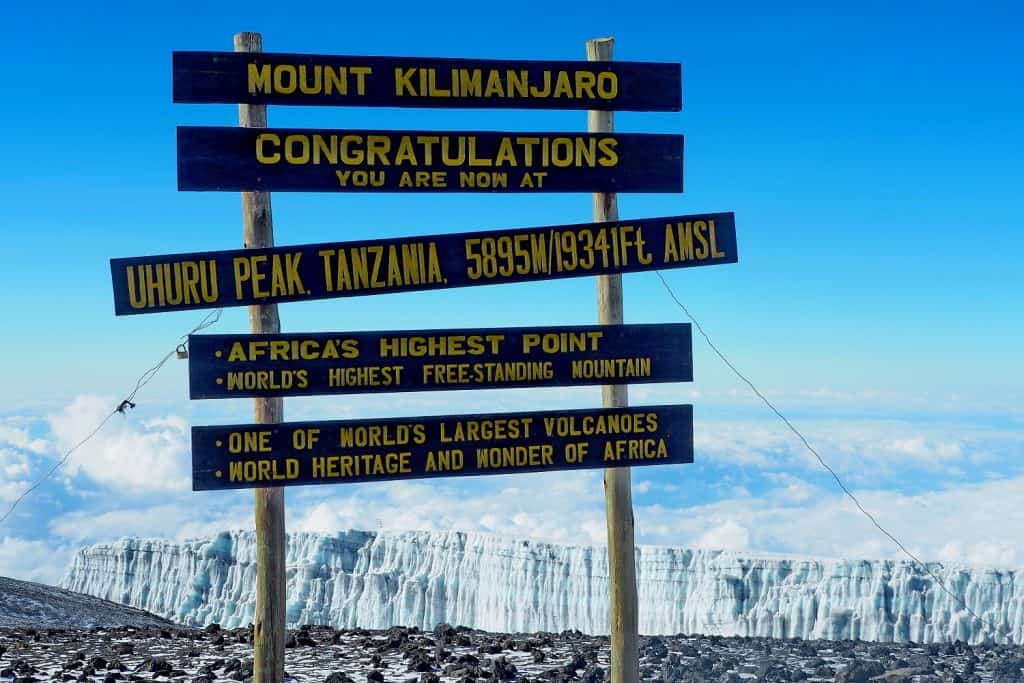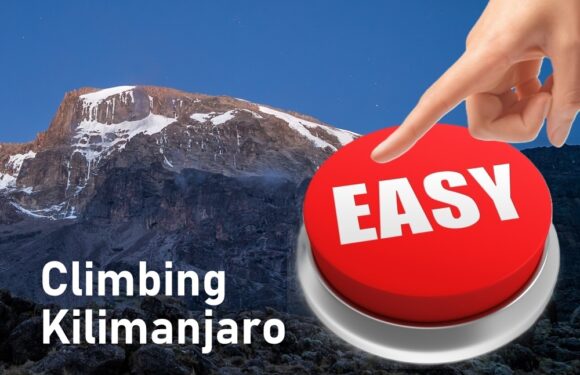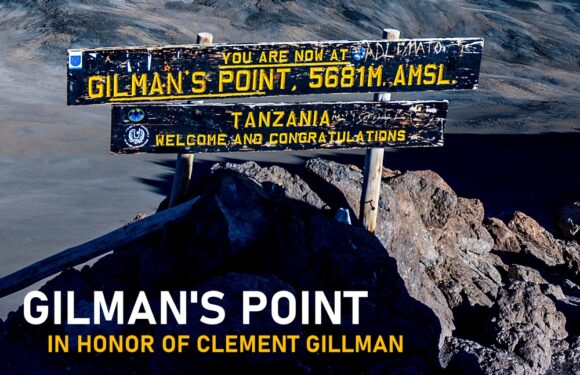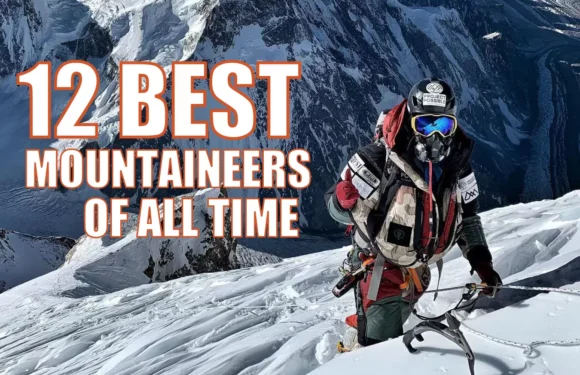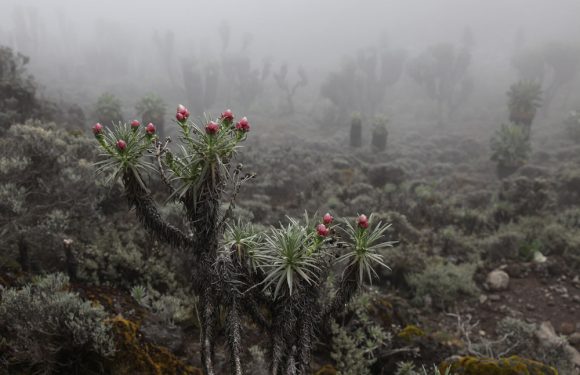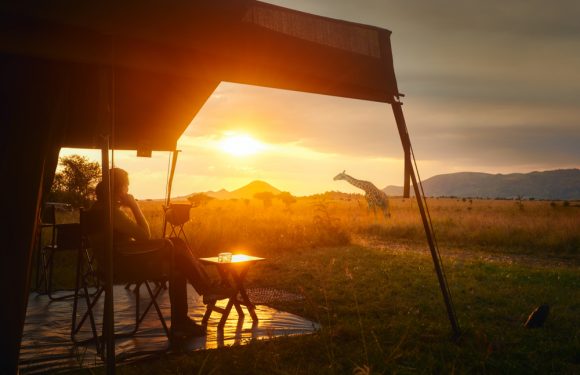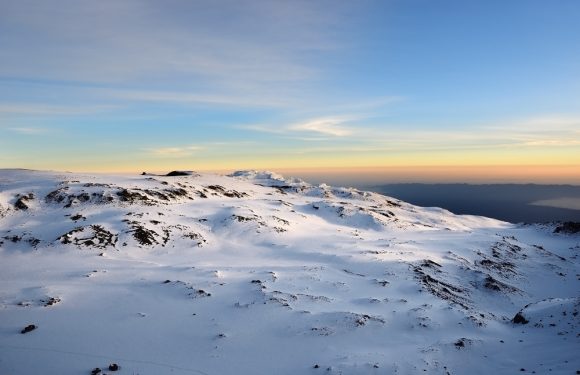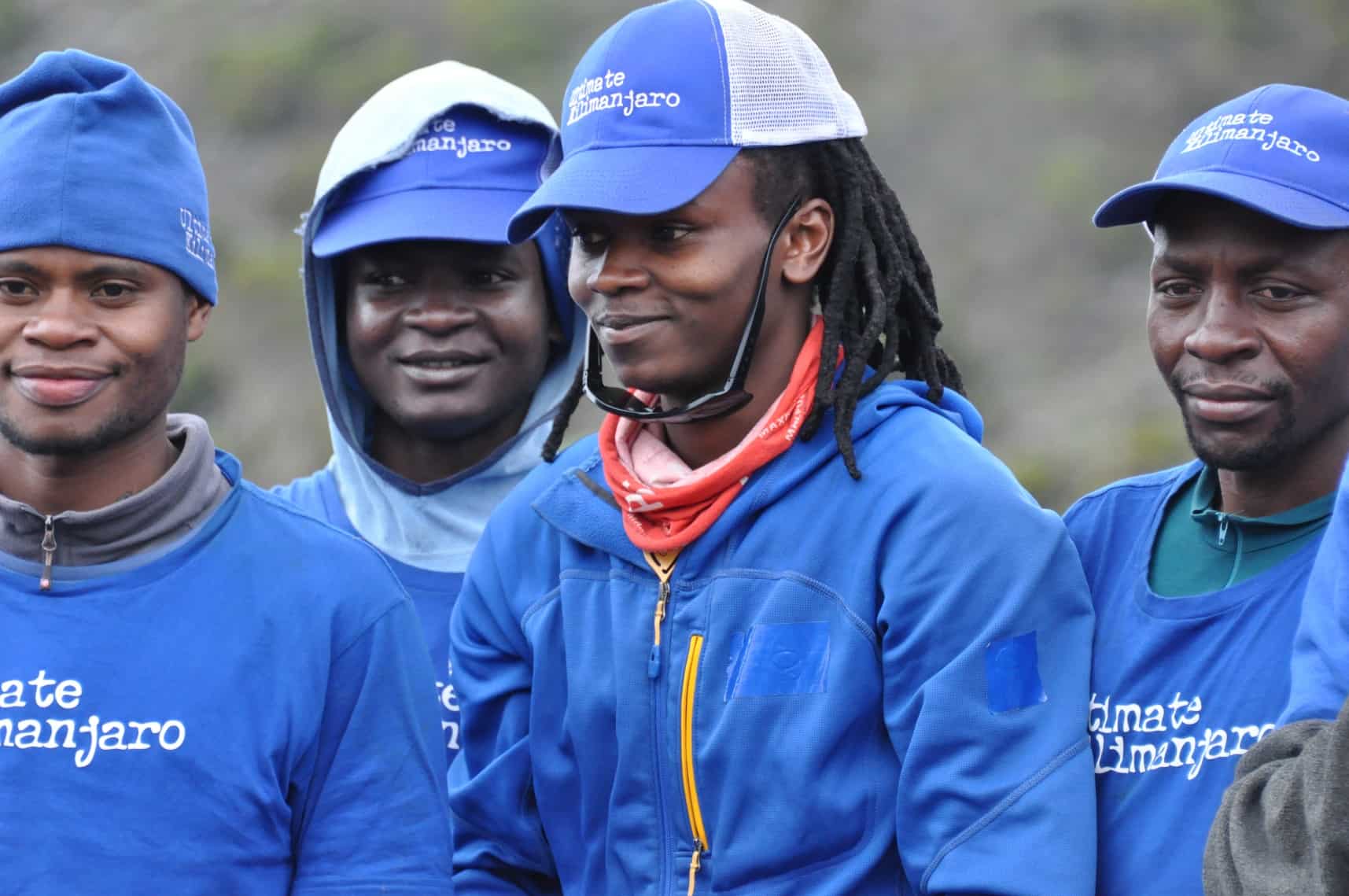
You’re getting ready to climb Kilimanjaro.
You’re a responsible person. You spend hours and hours reading through various Kilimanjaro websites, personal blogs, and travel forums. You feel pretty well informed. Like you know everything you need to know, right?
Maybe not.
Here are things they don’t talk about when climbing Kilimanjaro.
1. You’ll Have Crazy Dreams
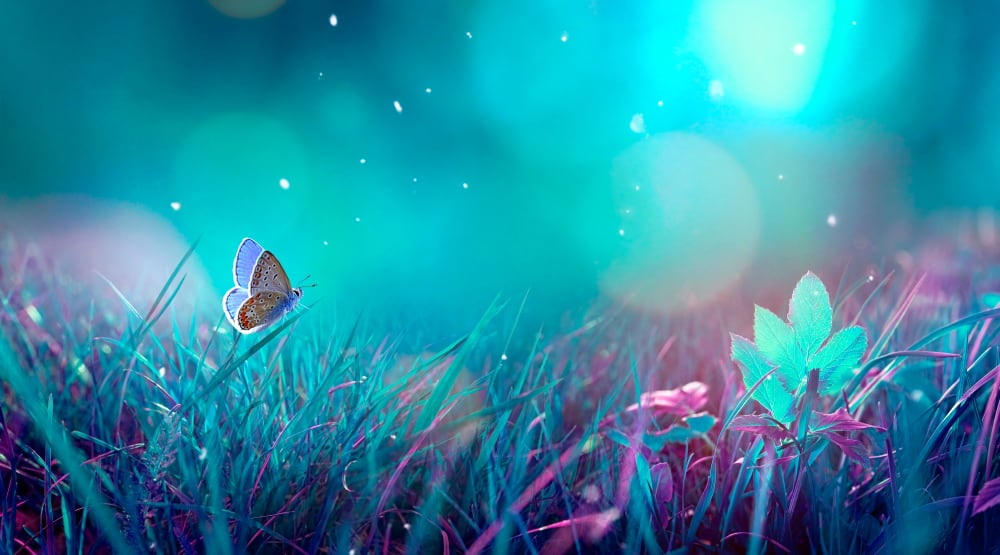
It is common to have some trouble sleeping on Kilimanjaro. The first reason is because sleeping in a sleeping bag, on a foam pad, and in a tent is not as comfortable as your mattress at home. Secondly, the oxygen is thinner and this makes breathing more labored.
Periodic breathing occurs at high altitudes. This is the alternating of deep and shallow breathing, or even a complete pause in breathing following deep breathing. This alternation of breathing patterns contributes to the insufficient amount of oxygen that already exists at high altitude.
As a result, sleep quality is affected. Deep stages of sleep and rapid eye movement (REM) sleep are reduced. You spend more time in light sleep. One possible explanation for more vivid dreams is that we are more likely to wake up during REM sleep, and therefore more likely to recall our dream. It could also be that the decreased oxygen levels cause your dreams to be more strange and nonsensical.
2. You’ll Fart a Lot

The negative effects of functioning in an oxygen deprived environment are well known, as are the symptoms of altitude sickness. But one thing that may be particularly embarrassing is that being at high elevation can cause you to become gassy. This is known as high-altitude flatus expulsion (HAFE). We’re not joking!
HAFE is a gastrointestinal syndrome which causes the spontaneous passage of increased quantities of rectal gases at high altitudes. The reason for this occurrence is that the difference in pressure between the gas in the body and the atmosphere triggers the body to expel the gas and equalize the pressure.
3. You’ll Hike Really, Really Slow
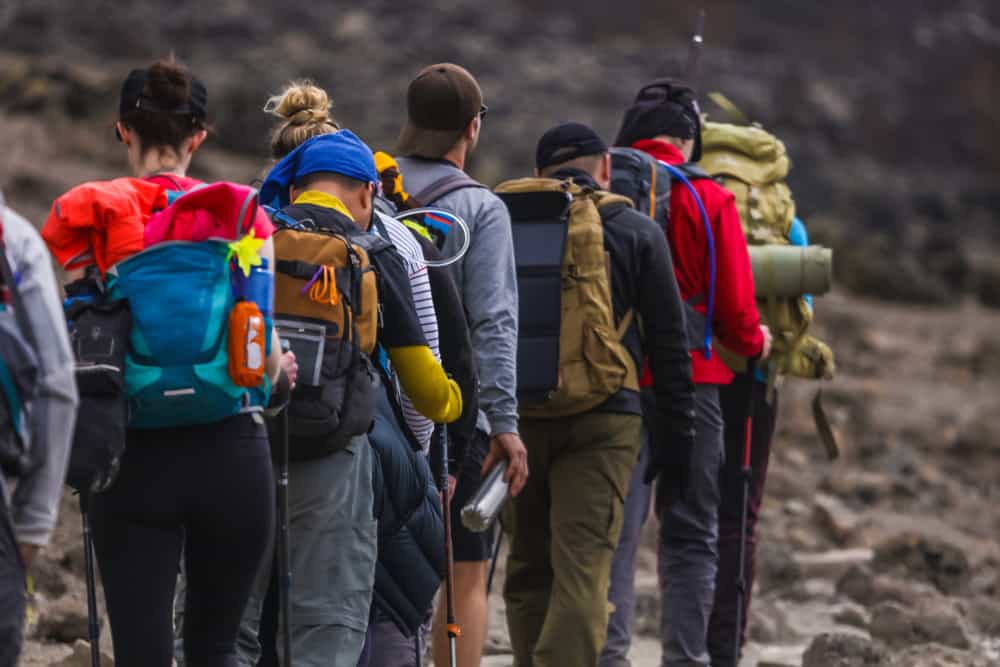
“Pole, pole” means “slowly, slowly” in Swahili. It is the key piece of advice you will hear repeated by our staff, and for good reason.
Altitude sickness is caused primarily by a combination of two factors – going up too high too fast. The easiest way to mitigate the risk is to climb slowly. Because the distances that we cover on a day to day basis are not very long, our guides trek at a snails pace to control the rate of ascent.
Gaining elevation gradually to aid in acclimatization makes plenty of sense. However, in practice, it is actually not that easy to do. It is challenging mentally because you know that physically you can hike much, much faster. You will be tempted to march ahead and get to camp quicker.
Did you know that young, fit males tend to be the ones who get altitude sickness? It’s because their ascent is outpacing their ability to acclimatize. Try to be patient. Hike at the pace the guide is setting. Our method is well tested over many thousands of clients and produces great results.
4. You’ll Feel Full Nearly All the Time

Our Ultimate Kilimanjaro® crew will provide you all the food you need – and food you don’t think you need.
Being at high altitude in it of itself burns more calories than at sea level. This is caused by a spike in metabolism. Add to that the activity of climbing, an increase in breathing rate, increased energy expenditure, and the process of acclimatization, and your need for calories rises dramatically. So it’s important that you eat as much as possible throughout the trip.
So why is it difficult to keep eating at altitude if the body needs the nutrition?
First, studies show that our bodies produce more of a hormone called leptin when exposed to high altitude. Leptin makes the body feel satiated. This is why you lose your appetite at elevation. Second, the same air pressure that causes farting also makes gas expand within the body. Your stomach can appear larger, rounder, and bloated on Kilimanjaro. Even if you have an empty stomach, you might feel and look like you are already full.
Our skilled mountain cooks prepare three hot meals a day. Breakfast, lunch, and dinner consists of several tasty courses, which you will enjoy in a cozy mess tent (equipped with tables, chairs and a solar lantern). With the sheer volume of food and the frequency that it is served, coupled with the leptin boost and bloating, you will feel full nearly all the time. There are probably going to be some mealtimes where you will not want to eat. Try to eat anyway.
Our guides will monitor your intake to make sure you are getting enough calories to replenish you energy.
5. Everything Gets Difficult at Altitude
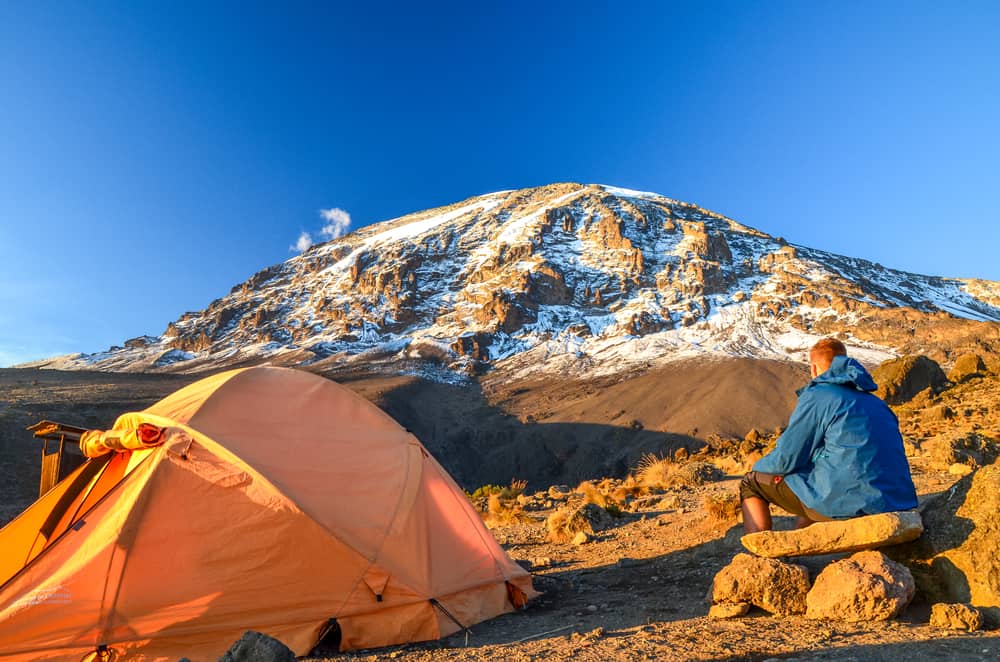
Almost everyone knows that higher you go, the harder the hiking gets on a physical level. But what they don’t often talk about is that just about everything gets difficult at altitude.
In a low oxygen environment the ability to plan, focus, and make complex decisions is impaired. In fact, one of the telltale signs of advanced acute mountain sickness is deteriorating mental capabilities. But even without a serious medical condition, the altitude can make things as simple as tying you shoes, unzipping your backpack, or finding your headlamp challenging. And it is most obvious during the grueling nighttime summit attempt.
On that night, during each rest break, climbers are encouraged to drink some water and eat something to stay hydrated and energized. This is more difficult than one would think. It requires taking off the backpack, unzipping it, finding snacks, finding water, unwrapping the snack and eating it, unscrewing the top of the water bottle and drinking from it, and then everything in reverse. If our guides detect that someone is having trouble, they will assist. Also, on the way to the peak, our guides carry hot tea and snacks and may simply hand you a mug or an unwrapped cookie so you don’t have to fuss around to drink and eat.
The way to prepare for a duller mental state is to have a set system and to stick to it. Be familiar with your gear and equipment so there is no confusion about how to operate something. Get used to the features of your daypack so you know how to work them. Store the same items in the same spots so you won’t fumble for anything under pressure. With repetition, your actions become more automated and less reliant on thought.
6. You’ll Be Covered in Dust
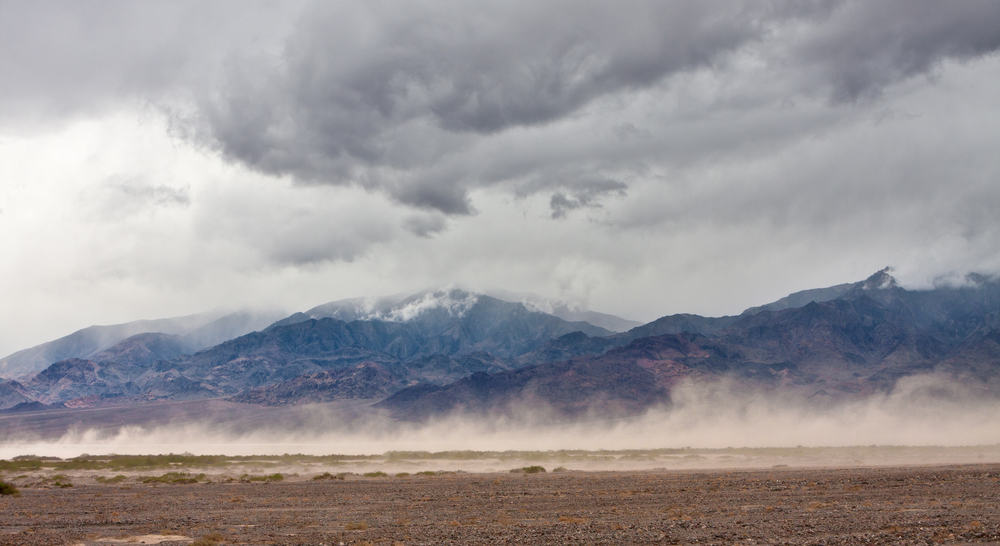
If you look at our gear list, you will see this:
Headwear 1 – Balaclava or Buff, for face coverage (optional)
Logically, you’d assume that a balaclava or Buff (a brand of neck gaiter) is to protect your face from strong, cold winds. You’d be right. You’ll probably want it on summit night for that. But the secondary reason to bring these items is due to the amount of dust.
When the terrain is dry, the particles fly. With every step someone takes, the dust goes airborne. Literally you and your trekking party will take thousands of steps per day. Hiking in groups in a single file formation and having teams of porters trudge by means you could be in a cloud of dust for hours per day.
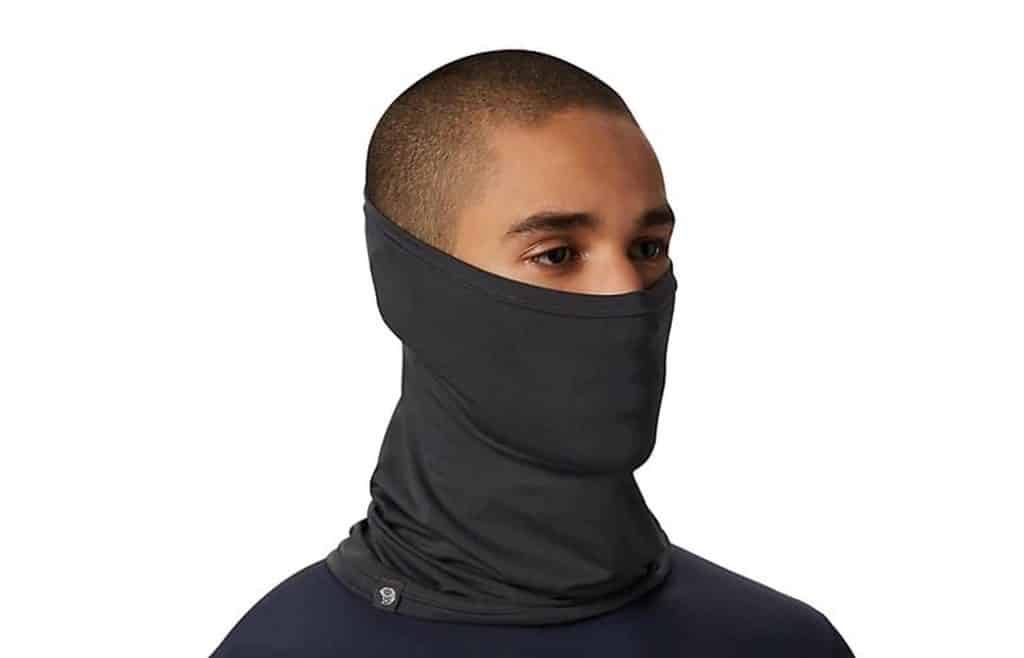
Getting dust into your eyes, ears, nose and mouth can cause problems with breathing, allergies, and other related health issues. You will want to protect yourself. So we strongly encourage climbers to bring something – whether it be a balaclava, neck gaiter, or bandana – and keep it handy so you can put it over your nose and mouth when needed. And don’t forget to blow your nose occasionally. Buff neck gaiters can be found here.
Though it’s inevitable that you’ll be coated with dirt at the end of the expedition, you should still practice good hygiene by quickly washing you face and neck at the campsite water stations (consisting of a bucket of warm water and liquid soap). You can also bring “wet wipes” for a daily freshening up.
7. You’ll Question Why You Came Here
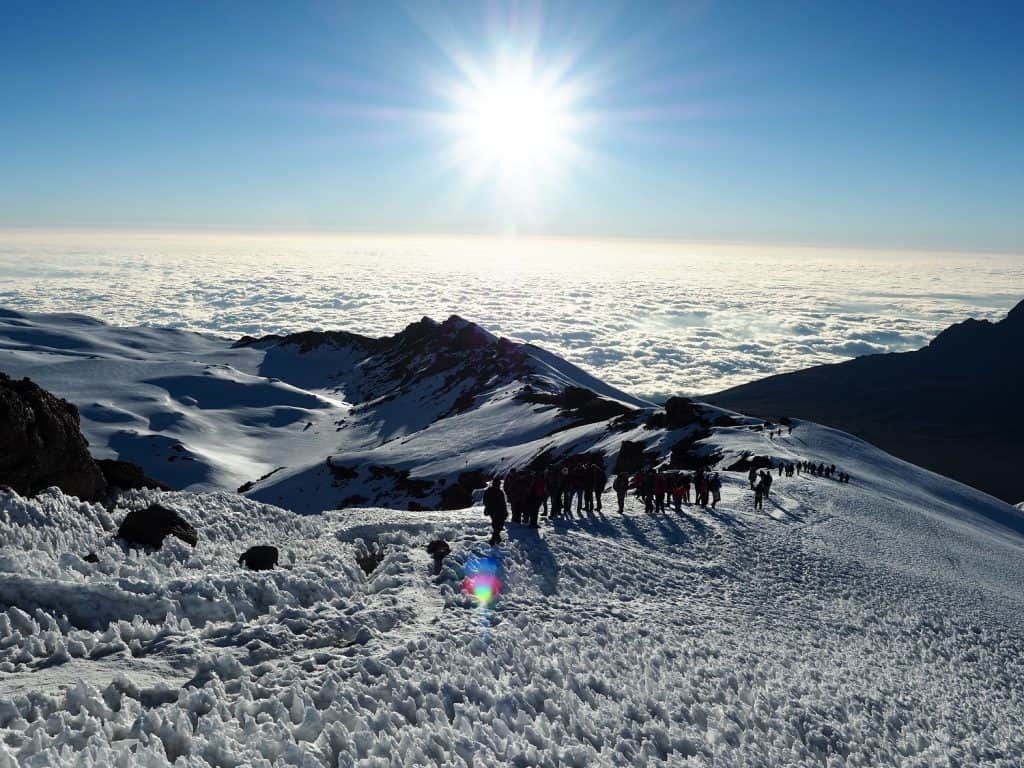
Hiking can stir up a lot of emotions. It starts usually with excitement and anxiety. And ends with happiness and relief. But in between there are almost certainly going to be bouts of misery. Possibly even regret. When you are exhausted, in pain, cold, or feeling ill, you will ask yourself, “Why did I come here?”
Sure it sounds better in that moment to be resting at home, on your couch, or in your warm bed. But what fun is that? That is not what memories and adventures are made of! You dared to conquer Kilimanjaro because you wanted to do something extraordinary!
Time and time again, we have clients say climbing Kilimanjaro was the hardest thing they have ever done. They also add that it was the coolest thing they’ve done, and that they will never forget the experience.
With time, the pain and suffering will fade. And the memory of it all just keeps getting better. We have clients that swore they would never do it again, that return for their second (and third) summits.
Never say never.
__________
See 10 Tips for a Successful Climb on Mount Kilimanjaro
See 12 Things You Need to Know Before Climbing Kilimanjaro
See The Beginner’s Guide to Climbing Kilimanjaro
Download our Kilimanjaro Guide
Want a no obligation trip quote? Click here
